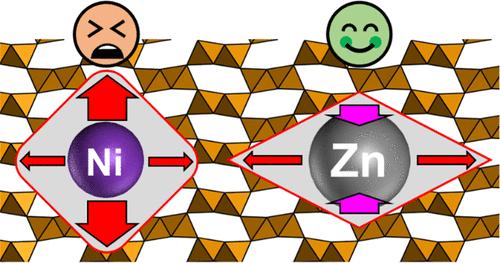杂质对针铁矿氧化还原性能的影响
IF 11.3
1区 环境科学与生态学
Q1 ENGINEERING, ENVIRONMENTAL
引用次数: 0
摘要
氧化铁矿物可以调节环境中的电子通量,是痕量元素和次要但关键元素的重要宿主。在这里,我们首次提出了镍和锌的局部配位环境与它们的宿主相鹅膏石(α-FeOOH)的氧化还原特性之间存在直接联系的证据,鹅膏石是地球表面最丰富的铁(III)(氧水)氧化物。我们利用水氧化还原测量结果表明,氧化还原电位 EH0 以及矿物的稳定性遵循以下顺序:纯鹅绿泥石 ≥ Zn-鹅绿泥石 > Ni-鹅绿泥石。平行的 X 射线吸收和散射测量利用量子信息分析证明,较小杂质镍的局部配位环境比锌产生更多的体应变能,这几乎解释了镍钴锰铁矿和锌钴锰铁矿之间 EH0 的差异。我们以理论为依据的实验研究揭示了两种常见杂质如何影响鹅绿泥石的稳定性,并对氧化铁(III)(氧水)在环境中介导元素和电子通量的生物地球化学反应活性产生了影响。本文章由计算机程序翻译,如有差异,请以英文原文为准。

Effect of Impurities on the Redox Properties of Goethite
Iron oxide minerals regulate the flux of electrons in the environment and are important hosts for trace and minor, yet critical, elements. Here, we present the first evidence of a direct link between the local coordination environments of Ni and Zn and the redox properties of their host phase goethite (α-FeOOH), the most abundant Fe(III) (oxyhydr)oxide at Earth’s surface. We used aqueous redox measurements to show that the redox potential EH0, and hence the mineral’s stability, follows the order: pure goethite ≥ Zn-goethite > Ni-goethite. Parallel X-ray absorption and scattering measurements demonstrate, using quantum-informed analysis, that the local coordination environment of the smaller impurity, Ni, causes more bulk strain energy than Zn, which nearly accounts for the difference in EH0 between Ni- and Zn-goethite. Our theory-informed, experimental study reveals how two common impurities affect the stability of goethite with implications for the biogeochemical reactivity of Fe(III) (oxyhydr)oxide in mediating elemental and electron fluxes in the environment.
求助全文
通过发布文献求助,成功后即可免费获取论文全文。
去求助
来源期刊

环境科学与技术
环境科学-工程:环境
CiteScore
17.50
自引率
9.60%
发文量
12359
审稿时长
2.8 months
期刊介绍:
Environmental Science & Technology (ES&T) is a co-sponsored academic and technical magazine by the Hubei Provincial Environmental Protection Bureau and the Hubei Provincial Academy of Environmental Sciences.
Environmental Science & Technology (ES&T) holds the status of Chinese core journals, scientific papers source journals of China, Chinese Science Citation Database source journals, and Chinese Academic Journal Comprehensive Evaluation Database source journals. This publication focuses on the academic field of environmental protection, featuring articles related to environmental protection and technical advancements.
 求助内容:
求助内容: 应助结果提醒方式:
应助结果提醒方式:


